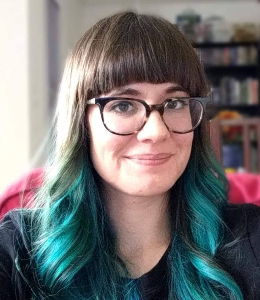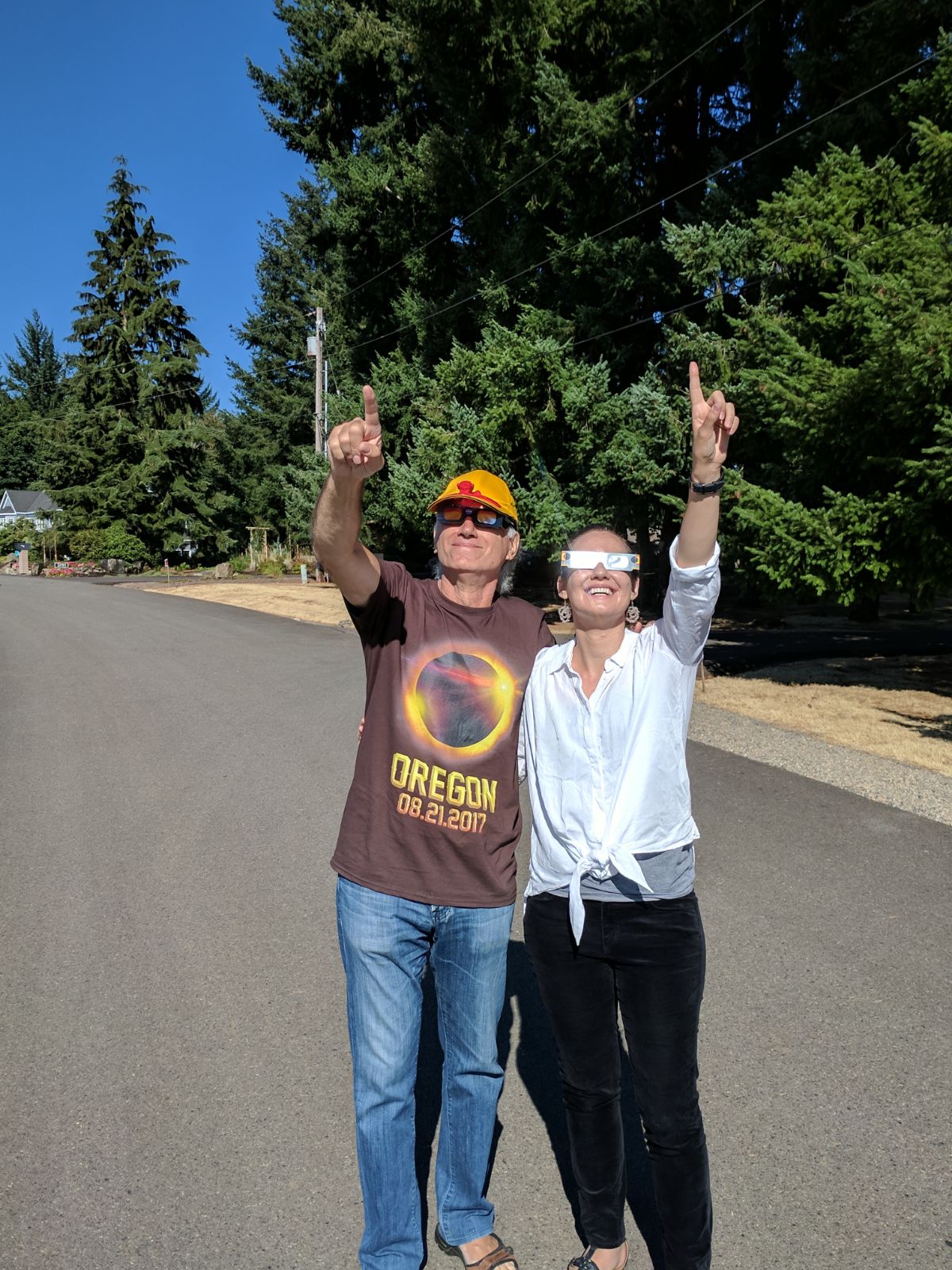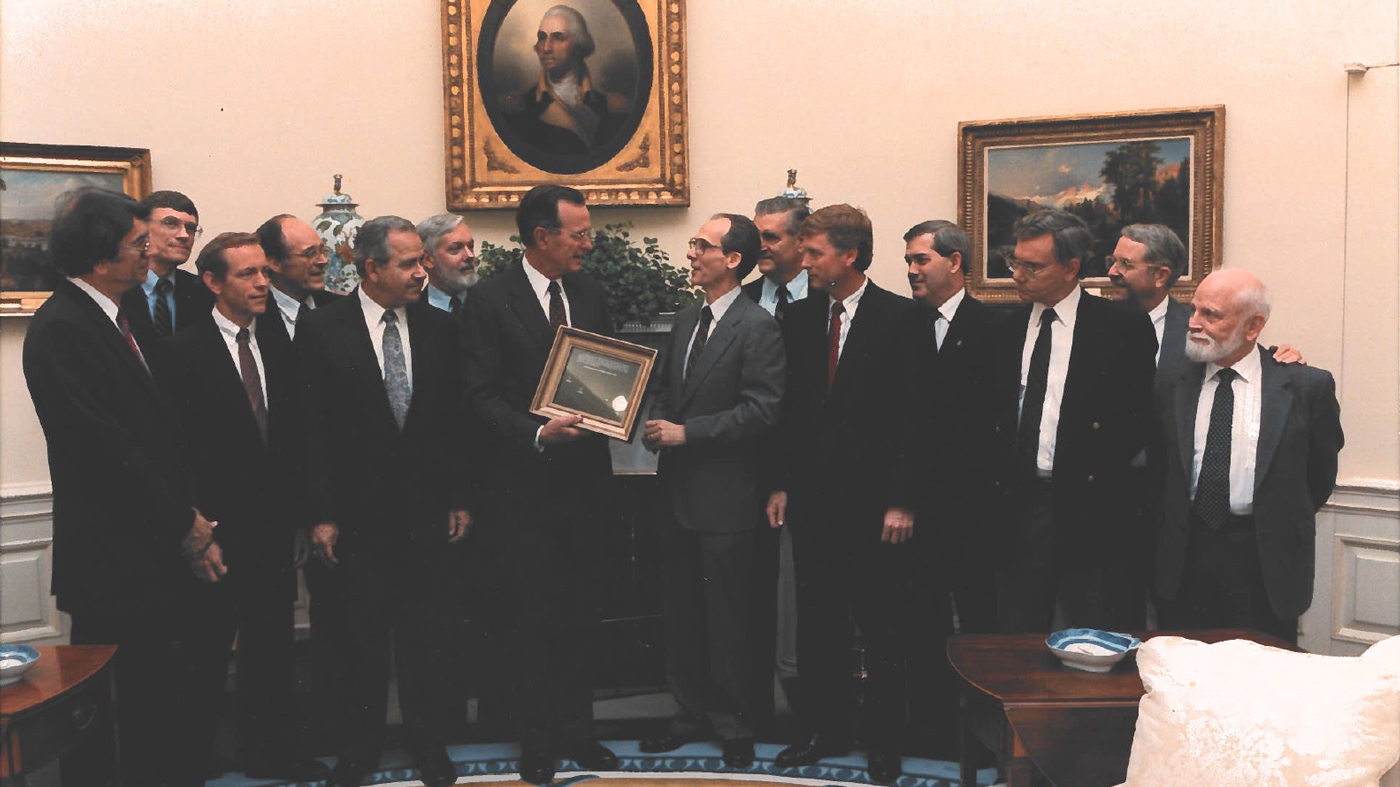
Name: Dr. Aleida K. Higginson
Titles: IMAP Deputy Mission Scientist
Formal Job Classification: Research Astrophysicist
Organization: Code 674, Space Weather Laboratory, Heliophysics Science Division, Sciences and Exploration Directorate, NASA’s Goddard Space Flight Center
What do you do and what is most interesting about your role here at Goddard? How do you help support Goddard’s mission?
I’m a member of the Heliophysics Science Division here at Goddard and I’m a solar wind physicist. We explore how the Sun forms the solar wind, and how the solar wind interacts with the solar system and affects life on Earth. My main role here is to do that through computer simulations. I take data recorded by NASA spacecraft about aspects of solar wind that we don’t fully understand and try to reproduce those effects in my models. Often this means modeling processes that happen on the Sun or in the solar wind before it reaches the spacecraft or Earth.
I also support the NASA missions that make the measurements we scientists use to answer our research questions. I’m currently serving as the deputy mission scientist for IMAP, the Interstellar Mapping and Acceleration Probe, and work with the Parker Solar Probe team as a co-investigator on one of the instruments.
What is your educational background?
I got my Bachelor’s at Florida Institute of Technology in Melbourne, Florida in 2011. I studied astrophysics and minored in computer science. That was a really cool place to go to school, because it’s just about an hour away from Kennedy Space Center. I distinctly remember being let out of our calculus class, in the middle of class, when the professor said: ‘Hey guys, there’s gonna be a shuttle launch. If you want, I’ll stop class, and you could go out onto the lawn real quick to watch this launch, and then come back into class and I’ll finish the lecture.’ So going to school there was a really cool introduction to NASA and space. I then went on to the University of Michigan, where I earned my masters in 2013 and my Ph.D. in 2016.
How did you become interested in heliophysics?
I did an internship at the Center for Astrophysics at Harvard as an undergraduate student, specifically to work with heliophysicists on magnetic reconnection. That was my first introduction to research. I got to learn more about the Sun, which as an undergraduate in astrophysics you learn about only in the broadest sense in classes, and this was right after the Solar Dynamics Observatory (SDO) launched. The Science Operation Center for SDO was at the Center for Astrophysics, and it was really cool as a student to watch the scientists and their excitement about getting all this brand new data and these new pictures of the Sun. So that was when I was like, ‘oh, wow, the Sun is super cool, and also has all these direct effects on Earth.’

How did you come to Goddard?
During graduate school at the University of Michigan, I was working with the group there that manages the solar wind data recorded by NASA’s Advanced Composition Explorer or ACE spacecraft. I was learning about the solar wind in classes, while getting exposure to how the instruments worked and how they were actually recording the measurements. Simultaneously, I also had an advisor at Goddard Space Flight Center, and that position was to do modeling of the solar wind. So for my Ph.D. research I was modeling the solar wind, while simultaneously being immersed in a research group that was focused on instrumentation, which was a unique experience.
Then, after my PhD, I did a one-year postdoc at the University of Michigan, and then I did a two-year postdoc at Johns Hopkins Applied Physics Lab, where I was the deputy project scientist for Parker Solar Probe. When my postdoc was over, I applied to this position within the Space Weather Lab, and it turned out to be a good fit. I started in August of 2020.
What do you enjoy about working at Goddard?
As a scientist, there is no better place to be than Goddard. I’m able to talk to a lot of different people really easily, and throw around a lot of different science questions. Basically with any aspect of a problem that I might have a question about or think is interesting, there’s already somebody around who is familiar with that, and we can start working on the problem right away.
What’s been the best part of working on the Parker Solar Probe mission?
Every abstract that I wrote as a Ph.D. student was in preparation for Parker Solar Probe. I knew it was something NASA had been working on for decades. And as a member of the scientific community, I was just really excited to see what the data would show. I never thought that I would actually get to work on the team, but then I did, right after the mission launched in 2018. I witnessed the beginnings of it and that was super cool.
What are you looking forward to with the launch of IMAP?
What’s really cool about IMAP is that it’s going to show us an integrated overview of what’s happening with energetic particles in the solar wind. A lot of these measurements have been taken by different spacecraft. All of the instruments on IMAP have flown before, in some version or another. They’re things that we have experience with, but they’ve all been in different places at different times. Being able to take these measurements within the solar wind at the same place and the same time, is going to give us a much bigger, unified vision of what’s happening with energy distribution in the plasma in the solar wind.
How do you spend your free time?
My daughter was born in May 2020, so we’re spending time together with her as a family and I’m learning to parent for the first time in a pandemic. If I have free time when she’s napping, I really like to garden, both indoors and out.
What is your advice to young people who wish to become scientists?
Make sure you take math and computer science courses. But also, there is nothing like hands on experience to make you fall in love with research. You might think you’re interested in one research topic, but one tiny project or experience with a different topic can change your entire career path. Make sure you stay open to new experiences.
Conversations With Goddard is a collection of question and answer profiles highlighting the breadth and depth of NASA’s Goddard Space Flight Center’s talented and diverse workforce. The Conversations have been published twice a month since May 2011 and are archived on the NASA Goddard homepage under the People tab.
By Alison Gold
NASA’s Goddard Space Flight Center


























